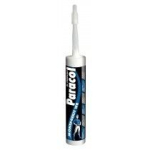- Home
-
Wall & Ceiling Panels, Skirting & Architrave, Laminate Flooring
- Home
- Wall & Ceiling Panels, Skirting & Architrave, Laminate Flooring
-
Wall & Ceiling Panels
- Home
- Wall & Ceiling Panels, Skirting & Architrave, Laminate Flooring
- Wall & Ceiling Panels
- View All Wall & Ceiling Panels
- Pannello Wall Panels
- 5mm Wall Panels
- 8mm Wall Panels
- 10mm Wall Panels
- Zest ZX Wall Panels
- Zest Shower Wall Panels
- SolidCore
- Ceiling Panels
- Bathroom Wall Panels
- Kitchen Wall Panels
- Tile Effect Bathroom Wall Panels
- CLADDING FITTING GUIDE
- Skirting & Architraves
- Silicone, Adhesives and Cleaners
- Laminate Flooring
- Sulcado Slat Wall Panels
- Wall Panel Trims
- Hygiene Cladding
- Brochures
- FITTING INSTRUCTIONS VIDEOS
- Fascia Soffits Guttering, EPDM Roofing, Exterior Wall Cladding
- Polycarbonate, Window Boards & UPVC Hardware
- Composite Decking, Balustrades, Fencing, Gates & Grass
- Underground & Drainage
- Featured Products
- homepage-brands
- Blog
- Careers
- Go to Quotes
Login / Register
Quotations
Quick Order Apply for a trade credit account
MENU
Quotes
0


Call for all queries:
033 33 606 707CAN YOU PUT WALL PANELLING ON THE CEILING?
Posted on 15/04/21
Wall panels transform walls to improve their appearance; hence you may be wondering if the same can be done for ceilings. You can install wall panelling on a ceiling, with the best panels being those made from plant fibre, vinyl, PVC, or foam. These panels have the advantage of being lightweight making them the perfect panelling for a ceiling.
How to Install Wall Panelling on the Ceiling
1. Measure the ceiling and find the ceiling beams. You can do this by using a drill or stud finder to make holes in the drywall until you hit a beam.
2. Cut down the wall panel, including cutouts for vents and lights using a jigsaw.
3. Install the panel using a pneumatic nailer or stable gun
4. Measure, cut, paint and fix the panels. Depending on the room size, you can use bigger or narrower boards.
5. Add trim boards
6. Caulk, fill nail holes and paint the panel.
Types of Ceiling Wall Panels
Some wall panels are not suitable for ceilings, However let us look at wall panels that work well with ceilings.
1. Foam Panels
Foam panels are versatile, easy to work with, and lightweight. Foam wall panels are applied through peeling and sticking. This means that you do not need to use an adhesive to install. You also do not need special hardware to install the panels.
Installation of foam panels is fast and easy as you only need to peel off the cover film at the rear of the board. Firmly press the sticky side of the panel to your target area. Before installing the wall panel, clean the area and dry it for the panel to stick correctly. Furthermore, your surface should be flat to ensure that the panel covers the maximum surface area.
Some foam wall panels have an acoustic feature hence won’t have peel-and-stick properties. These panels are slightly heavier and more rigid, and you will need extra adhesive glue to stick them on. Acoustic wall panels are excellent in blocking out sound, especially on a lower-level apartment.
2. Vinyl and PVC Panels
PVC wall panels are lightweight but also strong and solid. These panels have 3D patterns, with some designs being soft and subtle. You do not need professional experience to install PVC wall panels in your ceiling. You can install using an adhesive, a brad nailer, or a power stapler. Our PVC Ceiling Panels are available in 5mm and 8mm and are available in High Gloss white, Matt white, and much more.
3. Plant Fibre Panels
If you love nature, you may be impressed by a plant-fibre based wall panel. Plant-fibre products and technology have advanced in recent years, and they have proven to be aesthetically pleasing as well. Since plant-fibre boards have no adhesive, installation takes much longer than other types of wall panels. You will need a strong bond when installing plant fibre panels, and it will take you longer to apply the adhesive on each panel. Despite taking too long to install, plant fibre panels produce beautiful results.
Advantages of Wall Panelling on the Ceiling
Gets Rid of Mould
Bathrooms are prone to mould growth. Installing wall panels on a ceiling eliminates the problem of mould growth. Wall panels get warmer when compared to walls; hence they are less likely to encourage mould growth.
Easy-to-Install
Many types of wall panels are easy to install. You can cut the boards to your ceiling size and install them within a short time. Once you assemble all the necessary equipment for the job, you can install the panels even without professional help.
Providers Insulation
Wall panels on ceilings provide insulation, especially in bathrooms, by retaining heat. A warmer bathroom translates to reduced condensation since the air is closer to the temperature of your bathing water. Panelling on ceilings is most helpful if your bathroom has an outside wall or where you have a bathroom roof.




